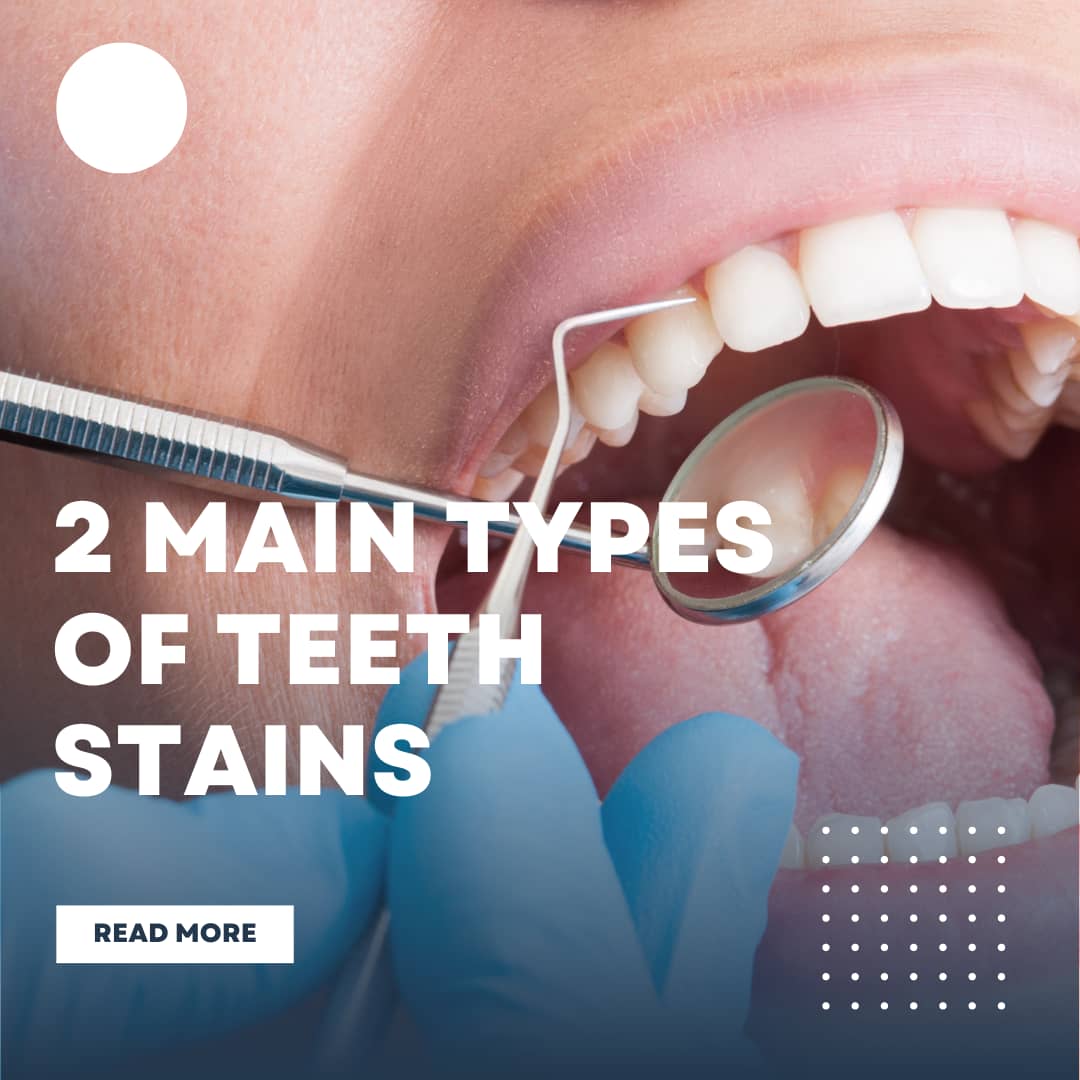There are two main types of teeth stains:
extrinsic and intrinsic.
- Extrinsic Stains:
Extrinsic stains are like splatters of paint or dirt
on the teeth. It originates from external sources that come into contact with your teeth. The most common cause include:
- Food and Drinks:
The dark pigments found in coffee, tea, red wine, berries, and even soy sauce can stain your
teeth over time. These chromogenic (color-producing) compounds stick to
the enamel, the hard outer layer of your teeth. - Smoking and Tobacco Use: Tobacco products like cigarettes, cigars, and chewing tobacco contain tar and nicotine, which stain teeth a
yellowish-brown color. These stains can be particularly stubborn and difficult to remove. - Poor Oral Hygiene: Plaque, a sticky film of bacteria that forms on teeth, can trap food particles and stains, further contributing to discoloration.Brushing and flossing regularly are essential to prevent plaque buildup and maintain a bright smile.The good news is that extrinsic stains are often the easiest to address.Regular brushing with a fluoride toothpaste can remove surface stains.Professional teeth cleanings from your dentist can tackle more stubbornbuildup and leave your teeth feeling sparkling clean.
- Intrinsic Stains:Unlike extrinsic stains, intrinsic stains originate from within the tooth itself.They can be more challenging to remove and may require professionalintervention. Here are some common causes of intrinsic stains:
- Medications:
Certain medications, particularly tetracycline antibiotics used during childhood tooth development, can stain teeth a gray or brown
color. Other medications, such as antihistamines and certain blood pressure medications, can also contribute to discoloration. - Trauma:
Injury to the tooth, such as a fall or blow to the face, can damage the pulp (the inner part of the tooth) and lead to discoloration. - Genetics: The thickness and translucency of tooth enamel can be influenced by genetics. Some people naturally have thinner enamel, which can make the underlying dentin (a yellowish-brown tissue beneath the enamel) more visible, leading to a darker appearance.
- Aging: As we age, the enamel on our teeth can naturally thin, allowing the underlying dentin to show through and contribute to a yellowish cast.
- Additionally, the accumulation of dentin over time can also darken teeth. As we have seen, traditional methods may not be enough to combat deep stains or discoloration.
- Trauma:
Injury to the tooth, such as a fall or blow to the face, can damage the pulp (the inner part of the tooth) and lead to discoloration. - Genetics: The thickness and translucency of tooth enamel can be influenced by genetics. Some people naturally have thinner enamel, which can make the underlying dentin (a yellowish-brown tissue beneath the enamel) more visible, leading to a darker appearance.
- Aging: As we age, the enamel on our teeth can naturally thin, allowing the underlying dentin to show through and contribute to a yellowish cast.
- Additionally, the accumulation of dentin over time can also darken teeth. As we have seen, traditional methods may not be enough to combat deep stains or discoloration.

One Comment
Hi, this is a comment.
To get started with moderating, editing, and deleting comments, please visit the Comments screen in the dashboard.
Commenter avatars come from Gravatar.